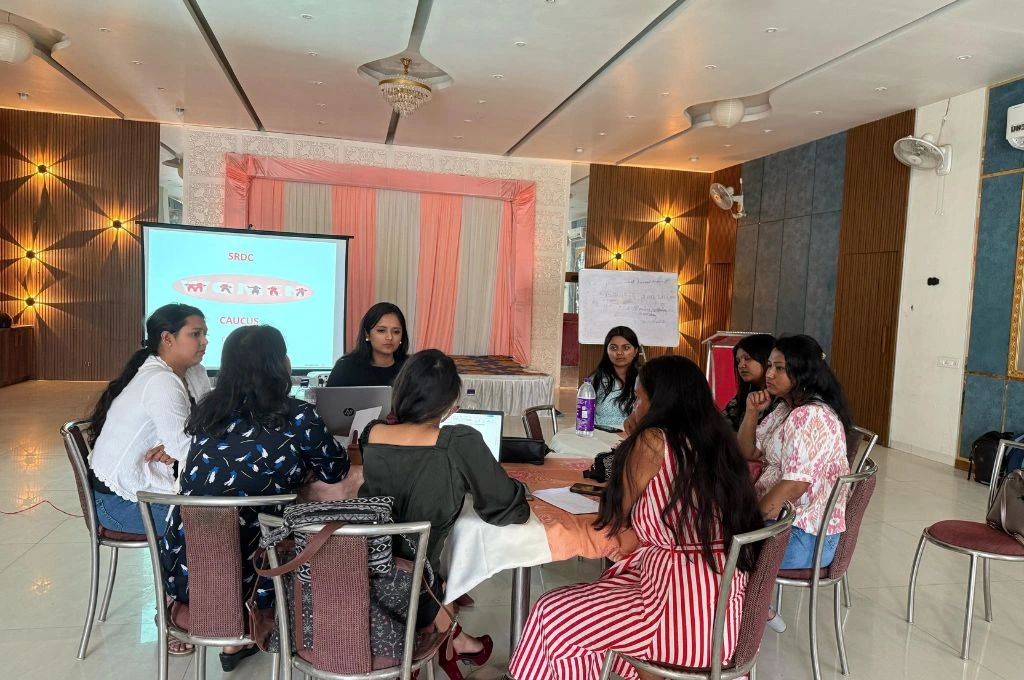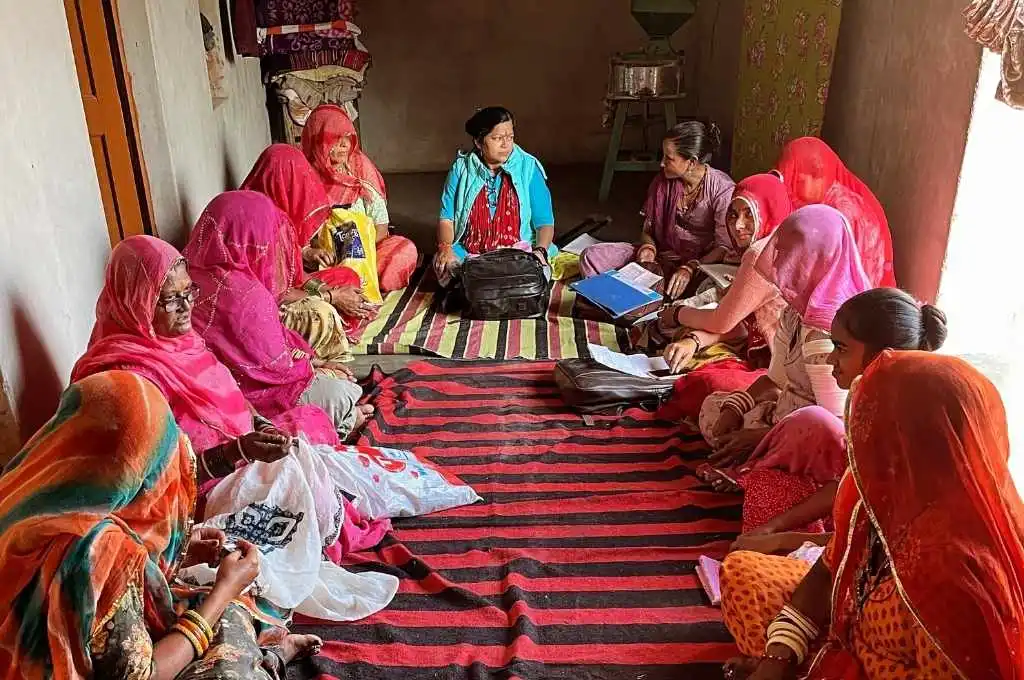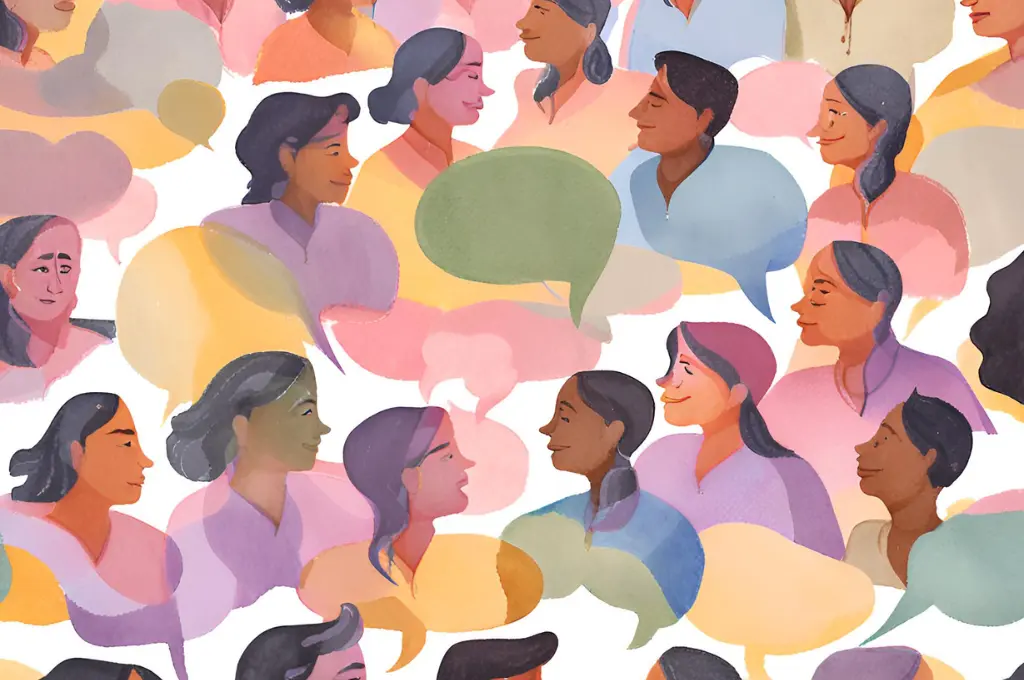Over the past few years, there have been intermittent attempts to understand gender-based inequalities in India’s nonprofit sector. In 2015, a survey of more than 300 organisations found that women occupied only 34 percent of managerial positions despite making up more than half of the sector’s workforce. Another study, conducted in 2016 across nonprofits in major Indian metropolises, identified key barriers to gender equality—chief among them was the dual burden of home and workplace responsibilities, which is disproportionately borne by women.
For nearly a decade, Professional Assistance for Development Action (PRADAN) has designed initiatives to identify and address gender disparities within its structure. Even though most of its programmes have been geared towards organising women to improve livelihoods and reduce socio-economic vulnerabilities, the ratio of female to male employees within the organisation has remained skewed at all levels.
In 2017, there were only 71 women for every 100 men at the entry level, with the dropout rate increasing with years of service. At the same time, women in the organisation had been raising concerns about the work culture—particularly how gendered stereotypes were affecting them, both in terms of their work and interactions with male colleagues, as well as broader organisational issues such as work allotment.

Understanding structural and interpersonal disparities
PRADAN primarily works with Adivasi communities across eight states in the Central Indian Plateau. Staff are organised into work units of five to six people and are based in block- and district-level towns, which are often located in remote areas.
Women had been raising several issues, including missed work opportunities due to perceived constraints on mobility and safety—factors that inevitably led to certain tasks being allotted to men. For instance, if a project required visiting and interacting with vendors in marketplaces outside of regular daytime hours, it would be assigned to male employees. Similarly, women were asked to work on themes such as gender and nutrition, issues they were automatically presumed to be good at.
Many of the challenges highlighted by women were also formally documented in an internal study conducted in 2014, which sought to understand gender-based barriers to professional development. Women respondents identified several barriers, including the perception that long working hours were a sign of commitment; an emphasis on ‘toughness’ and expectations to continue working regardless of life-stage needs; and a lack of understanding about women’s multiple roles and responsibilities in the family and the workplace.
Based on these findings, the organisation introduced three initiatives, which included revising the induction curriculum to address gender-based discrimination in household and work settings; and conducting periodic gender audits across work units.. The gender audit was a formal process that helped each unit take stock of itself and prepare action plans based on the Gender at Work framework, which comprises the following:
- Individual awareness and sensitivity.
- Access to and control over resources.
- Policies, norms, and resource allocation.
- Organisational culture and beliefs.
The third initiative was the creation of a women’s caucus as an internal platform for dialogue and support for women employees. The insights gained through these exercises have informed the steps taken to address gender-based disparities within the organisation:
1. Creating institutional support and spaces for dialogue
Among the key issues reported by women were a sense of low self-esteem and helplessness, and a lack of institutional support. In 2016, the women’s caucus was conceived as a voluntary and non-formal space within the organisation where women could meet and connect, challenging the dichotomy between professional and personal spaces. It also provided a platform to vocalise issues across age groups and collectively influence organisational culture and policies, including grievance redressal mechanisms.
At the beginning, a seven-member working group was created to support the women’s caucus initiative across regional groups. Regional caucuses met regularly according to a decided schedule, allowing women from diverse backgrounds to come together and share their experiences. These conversations revolved around issues such as navigating culture shocks arising when moving from a city to a remote field area, travelling in difficult terrains and dealing with differing notions of safety, and changing personal beliefs and biases within the team and while interacting with local communities.
These meetings gave tangible form to the feminist argument of the artificial divide between personal and professional spaces. For instance, when the caregiving load became very high, women’s performance in the workplace was likely to be affected. Conversely, when workplace demands intensified, they spilled over into their personal lives.
2. Addressing gender biases within the organisation
In the 2014 scoping study, responses from male staff on gender disparities in the workplace reflected common stereotypes—appreciating women for being ‘soft-hearted’ while criticising them for being ‘dependent’ or ‘fickle’. Following the establishment of the women’s caucus, there was a general perception that the platform dealt solely with ‘women’s issues’, echoing broader social biases that decry feminist concerns as inherently being against men.
The organisation tried to institute a ‘Men in Gender’ programme aimed at creating a group of men interested in engaging with issues related to gender equality within the organisation. It was based on the idea that the group could jointly work with the women’s caucus to address fear, resistance, and misconceptions among male colleagues regarding the purpose of gender equality initiatives. However, the programme has not taken firm root in the organisation, primarily due to inadequate time and resources allocated to it.
3. Translating experiences into action
In 2024, a survey was conducted with more than 100 members of the women’s caucus to assess the forum’s impact. All the respondents said that the platform had fostered a sense of sisterhood and confidence. Between 75 and 90 percent of women said that they were able to openly discuss sensitive issues in a non-judgemental space, while also finding opportunities for personal and professional growth through shared learning and support.
While the caucus served as an important platform for women across the organisation’s operational regions, it was essential to use the discussions emerging from these meetings to build a shared agenda: identifying the root cause of these issues, understanding which of these causes were embedded in the organisation, and determining a plan for change.
The regional women’s caucuses would present important issues to the regional management nodes, which could then develop a plan of action. An integration group consolidated these recommendations and would present them to the management and governing nodes on a half-yearly basis.
The women’s caucus helped identify areas where the organisation needed to either formulate new policies—such as menstrual leave, prioritising women in leadership positions, and flexible working hours—or review existing policies, including maternity benefits and recruitment. At the individual level, it enabled women to learn from one another, deal with their fears and biases, and take on challenging and unconventional roles.
This process translated into concrete changes, including the introduction of new policies such as menstrual leave, prioritising the inclusion of women in leadership roles, flexible working hours, two weeks of paternity leave, 12 weeks of childcare leave in cases of adoption, and leave in the event of a miscarriage.

Expanding the scope to account for intersecting inequalities
While the implementation of the women’s caucus has been a slow and at times irregular process, it has raised key issues that need to be addressed at both the personal and organisational levels. These include identifying the need to make both new and existing policies more gender-responsive. For instance, while maternity policies are becoming more common, they still conform to the idea that the primary responsibility of childcare rests with the mother.
This process has also opened up the possibility of expanding how gender equity is understood and what its scope of action can be. While both maternal and paternal leave policies are in place, these could be built upon to engender broader provisions around parental leave and related benefits in the future.
Moreover, there remains an urgent need to address the impact of patriarchal structures, especially as these intersect with other forms of marginalisation and oppression based on caste and class. Importantly, ideas of dominant forms of masculinity and femininity continue to operate even within the conventional male-female gender binary, excluding those who do not conform to set or expected behaviours.
While the conversation around these themes is still at a very nascent stage, it is nevertheless critical for nonprofits to be attentive to how these issues shape organisational culture and policies, both implicitly and explicitly, and impact the well-being and participation of employees.
Sustaining gender-equity initiatives over time
Despite the women’s caucus’ instrumental role in introducing certain policy changes in the organisation, the initiative lost steam over time, with meetings becoming irregular and action plans not being properly realised. This resulted in an emerging loss of faith in the platform’s efficacy among women.
As a result, all women in leadership positions came together to form a strategy to strengthen the caucus. This involved discussing the 2024 study on the caucus; consulting external experts to develop best practices; and reconstituting an integration group tasked with defining the purpose of the caucus, its non-negotiables and functions, as well as implementation and outcome measurement strategies.
While this process is currently underway, implementing this initiative for nearly a decade has offered the following learnings into what is needed to sustain gender-equitable initiatives.
1. Getting senior leadership involved
The absence of women in leadership positions during caucus meetings was identified as one of the two major factors contributing to the dilution of the women’s caucus. Their absence meant that the responsibility of the caucus meetings was mostly borne by younger colleagues. Making sure that an organisation’s leadership is intentional and involved in programmes from the very start is, therefore, essential.
2. Defining resource allocation and programme strategies
The second major contributing factor was the irregular functioning of the integration group. Members of this group were from different work units, and as such, managing their workload with day-to-day tasks became difficult. This, coupled with a lack of acknowledgment for their additional effort, posed a problem. Organisations that want to implement gender-responsive initiatives must ensure that separate resources are allocated for such work, along with a detailed strategy for programme implementation and clear outcome indicators to properly monitor progress.
3. Navigating overt biases and ‘well-meaning’ behaviours
Addressing gender-based disparities goes beyond the confines of formal policy to include biases and culture. While it may be easier to identify overt cases of discrimination (hostile sexism), acts of benevolent sexism—seemingly positive attitudes that actually reinforce inequalities—can be more difficult to navigate. For instance, several men expressed that their ‘fear’ came from a lack of understanding of what was wrong with their seemingly ‘caring’ and ‘protective’ behaviour towards women colleagues. These sentiments are sometimes also internalised by women, who may assume that they would be good at certain tasks or responsibilities. In such instances, creating a space for dialogue to challenge these biases is extremely important.
Ultimately, implementing and sustaining gender-equitable programmes requires both intention and institutional support. This necessitates a multi-pronged approach that can account for individual experiences beyond the workplace—such as caregiving burdens at home—and initiate change across all levels: whether organisational policies and practices, or nonformal interactions and engagement among colleagues.
—
Know more
- Read more about PRADAN’s gender audit process.
- Understand the importance of using inclusive language for meaningful action.
- Learn how to build feminist leadership to advance equity and justice.





